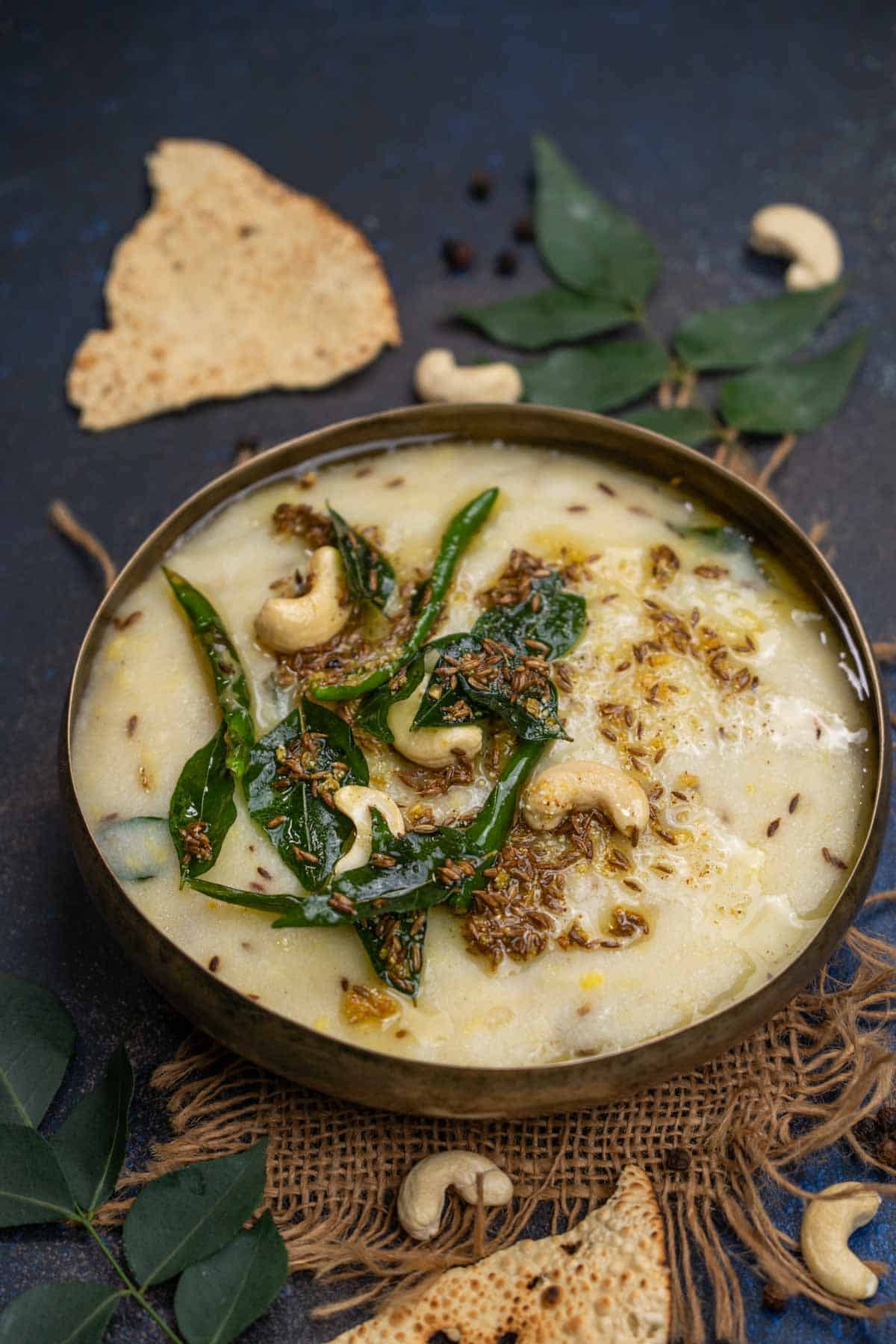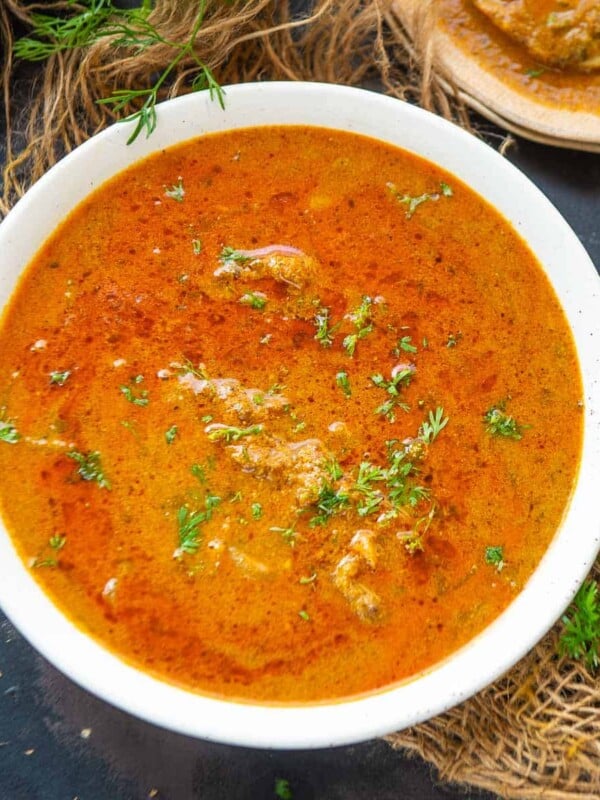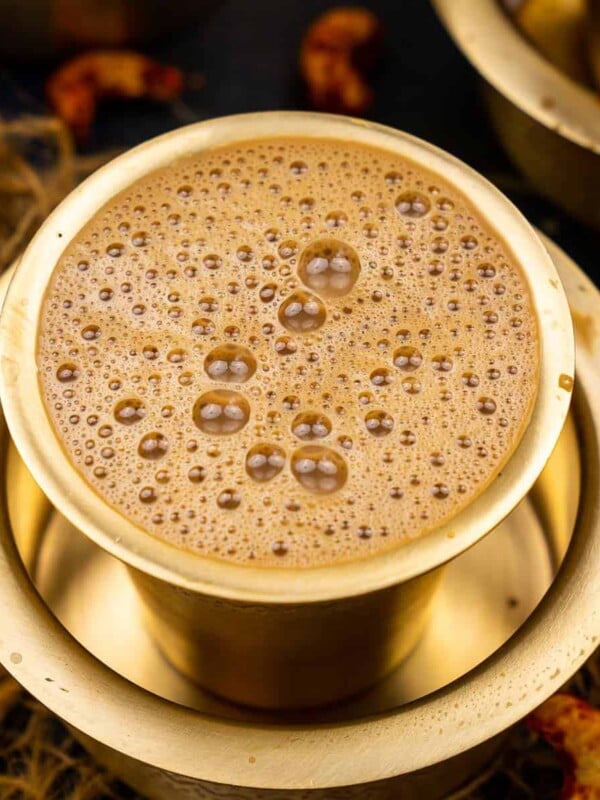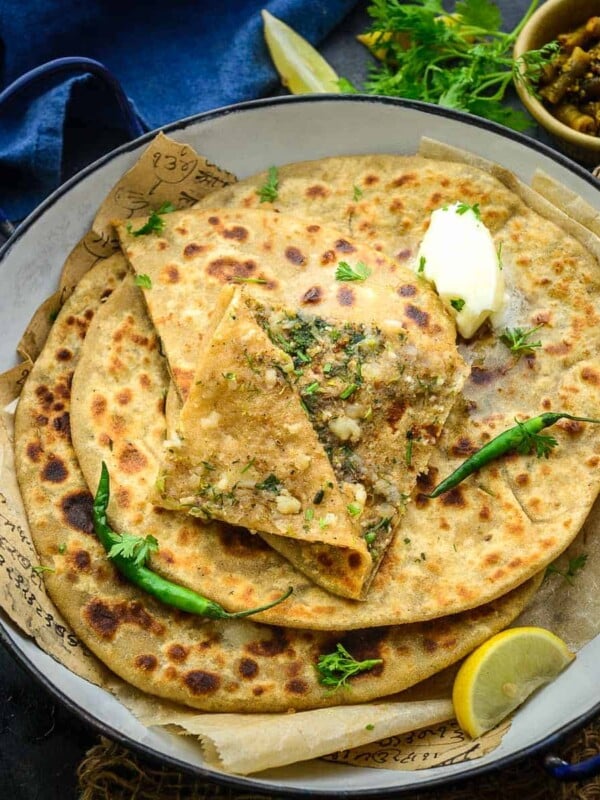on Feb 09, 2021, Updated Apr 22, 2024 I love South Indian breakfasts for their simple flavors. Here are more of my favorite South Indian-style morning breakfast recipes: Rava Upma, Ragi Idli, Egg Dosa, and Ragi Vermicelli. Some recipes need a lot of improvisation, and this rava pongal is one for me. When I started to cook this recipe, I cooked the rava and rice together. It was a hot mess. The cooker spewed everything out, and my kitchen took at least an hour to clean. The next time, I forgot to roast the rava, and the pongal was a hot mess again. However, the experiment taught me that roasting sooji is essential. Then, I came up with the idea of cooking rice and rava separately and mixing them later. This approach worked. Now I make rava pongal frequently for breakfast.
About Rava Pongal
Rava Pongal (also known as sooji pongal, rava khara pongal, or semolina pongal) is a South Indian dish made with semolina and yellow moong lentils. It is a variation of the classic Ven Pongal, where rice is replaced with rava. You can serve it for breakfast, lunch, or dinner or pack it in the lunchbox. You can also make it for the festival of pongal. I like to serve rava pongal with Mango Pickle, White Coconut Chutney, and a drizzle of ghee. You can also serve it with Peanut Chutney, Red Chilli Coconut Chutney, or any other chutney you like. This rava pongal recipe is vegetarian and can easily be made vegan. It can be made in a traditional pressure cooker or an instant pot. I share both methods in the post below. Check more Sankranti Recipes here. Sooji is lightly roasted before adding to the cooker with other ingredients. Do not brown it; otherwise, it will change the color of your pongal. You can buy already roasted rava to speed up the process. Dal – You will need yellow moong dal (split and skinned moong lentils). Ginger – Fresh ginger adds a subtle flavor, making this pongal even more delicious. So do not miss this one. For Tempering – Pongal is tempered with ghee, cumin seeds, asafetida (hing), curry leaves, green chilies, cashew nuts, and black peppercorns. Use ghee (not oil) for tempering, as it adds a lovely, rich, authentic taste. To make the recipe vegan, you can replace ghee with coconut oil. Adjust the green chilies as per your taste. Cashew nuts are optional, but they add a nice crunch. You can replace them with peanuts or almonds. Line a baking tray or a large plate with a kitchen cloth and spread the dal on it. Let it air dry for 20 minutes. Add the following ingredients to the cooker and stir well.
1 cup water 1 teaspoon grated ginger 1 teaspoon salt
Remove the cooker from the heat and let the pressure release naturally. Open the lid and mash the dal until smooth using a wire whisk or the back of a spoon. Add the dal to the instant pot and roast until lightly browned, stirring frequently. Add water, grated ginger, and salt to the cooker and stir well. Close the instant pot lid and set the valve to the sealing position. Press PRESSURE COOK and set the timer to 12 minutes at high pressure. Once the timer goes off, let the pressure release naturally for 10 minutes. Release the remaining pressure manually and open the lid. Mash the dal until smooth using a wire whisk or the back of a spoon. Do not over-roast the rava. You don’t want to brown it. Remove the pan from the heat and set it aside. Once the water starts to boil, add the roasted rava slowly and whisk using a wire whisk until a smooth, lump-free mixture is formed. Add some more water if the mixture looks thick. Reduce the heat to low. Cover the pan with a lid and cook for 8-10 minutes, stirring a few times. Check for salt and add more if needed.
1 teaspoon cumin seeds ¼ teaspoon asafetida 10-12 curry leaves 2-3 green chilies (slit into half) 6-8 coarsely crushed black peppercorns
Tip – Save some tempering to garnish the ready pongal. Use coarse rava to make pongal. Coarse rava is also called Bombay Rava. To speed up the process, you can roast the rava in bulk and store it in an airtight container whenever you have spare time. You can then use this roasted rava to make many other dishes. This pongal tastes best when prepared fresh. Make the quantity only for one meal. If you have more, add some water to it before refrigerating. The pongal becomes thicker when refrigerated; adding some water will ensure consistency. Adding a generous amount of ghee is essential to make a good rava khara pongal recipe. Otherwise, it will become like a paste. Add finely chopped veggies, like carrots, beans, etc., to this dish to make it wholesome.
Salna (Empty Parotta Chalna)
South Indian Filter Coffee
Broccoli Paratha
Masala Chaas (Indian Spiced Buttermilk)

























